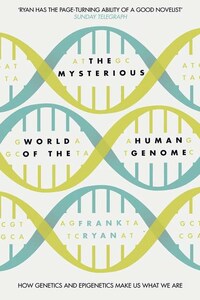William Collins
An imprint of HarperCollinsPublishers
1 London Bridge Street
London SE1 9GF
WilliamCollinsBooks.com
This eBook first published in Great Britain by William Collins in 2019
Copyright © Frank Ryan 2019
Frank Ryan asserts the moral right to be identified as the author of this work.
A catalogue record for this book is available from the British Library.
All rights reserved under International and Pan-American Copyright Conventions. By payment of the required fees, you have been granted the non-exclusive, non-transferable right to access and read the text of this e-book on-screen. No part of this text may be reproduced, transmitted, down-loaded, decompiled, reverse engineered, or stored in or introduced into any information storage and retrieval system, in any form or by any means, whether electronic or mechanical, now known or hereinafter invented, without the express written permission of HarperCollins.
Source ISBN: 9780008296674
eBook Edition © March 2019 ISBN: 9780008296698
Version: 2019-02-21
I would like to thank my editors,
Myles Archibald and Hazel Eriksson,
and my agent, Jonathan Pegg,
for their support of my writing this book
We all play hideous games with each other.
We step inside each other’s chalk circles.
Anthony Hopkins
Cover
Title Page
Copyright
Dedication
Epigraph
Introduction
1. What Are Viruses?
2. Coughs and Sneezes Spread Diseases
3. A Plague Upon a Plague
4. Every Parent’s Nightmare
5. A Bug Versus a Virus
6. A Coincidental Paralysis
7. Deadly Viruses
8. An All-American Plague
9. Lurker Viruses
10. How Flu Viruses Reinvent Themselves
11. A Lesson from a Machiavellian Virus
12. The Mystery of Ebola
13. The Mercurial Nature of the Zika Virus
14. A Taste for the Liver
15. Warts and All
16. Lilliputian Giants
17. Are Viruses Alive?
18. Inspiring Terror – and Delight
19. The Ecology of the Oceans
20. The Virosphere
21. The Origins of the Placental Mammals
22. Viruses in the Origins of Life
23. The Fourth Domain?
Bibliography and References
Index
About the Book
About the Author
Also by Frank Ryan
About the Publisher
What springs to your mind when you sit back and consider viruses? I am altogether aware that even if you come, as will many of my readers, from a non-scientific background, you will likely be uncertain as to the strange and ill-definable nature of viruses. Even among scientists, viruses are among the most enigmatic of the biological entities that are to be found on our precious blue-girdled planet. Certainly, there is a good deal of misinformation about them. You might, for example, be apt to confuse them with bacteria, a confusion that is not helped by the fact that we doctors caused this confusion in the first case by lumping two radically different entities together as the ‘microbes’ that are the root cause of infectious diseases.
Viruses frighten us. They elicit a primal fear of the unknown. They are capable of crashing through our natural barriers and defences, turning healthy cells into microscopic factories to produce exponential numbers of daughter viruses. These swarm through the bloodstream, drawing the attention of the immune system. This provokes our own white blood cells and other immune defences to become an aggressive reactionary force, fixated on annihilating the invaders, regardless of the devastation in their wake – indeed our very own immune system contributes to many of the familiar symptoms of the resultant illness, from runny noses to violent, bloody haemorrhages. In effect, every infection becomes a pitched battle that will determine the outcome for us, the host. As we come to know viruses better, we discover that they have also come to know us intimately, taking advantage of our very behaviour to facilitate their infectiousness and spread among us. All in all, that is rather scary. Especially so when we consider that some of those viruses include some of the most dangerous entities on the planet, entities eminently capable of making us very sick indeed – even killing us.
It is hardly surprising that we should fear them and consider them an epitome of menace, perhaps even evil. But contrary to what we might think about viruses, they are not driven by malice. Their ultimate goal, just like that of all living organisms, is simply to survive and multiply, thereby ensuring the success of their kind. That’s all very nice to know but this lack of malice is hardly a comfort to us when we are infected by a virus. It is only natural in such circumstances that we might resent viruses and what they might do to us. It is equally natural that we should also feel the need to protect those we love from viruses while knowing that, if and when one of them comes along, it will arrive among us, unseen and unknowable, causing damage and pain among us, even to the most innocent, without feeling or rational explanation.










